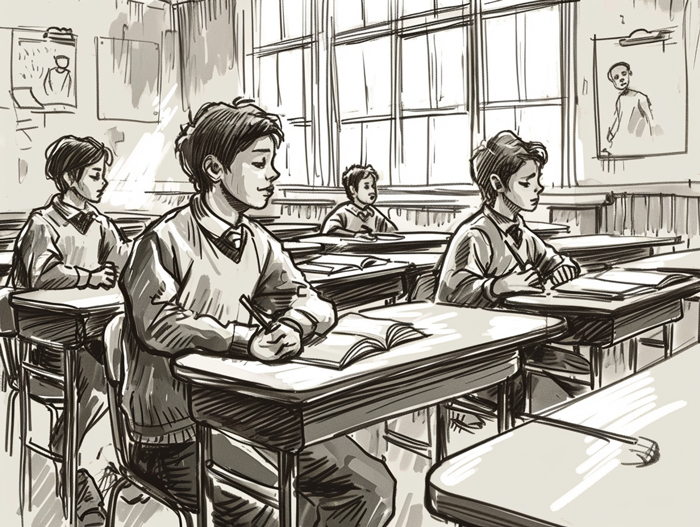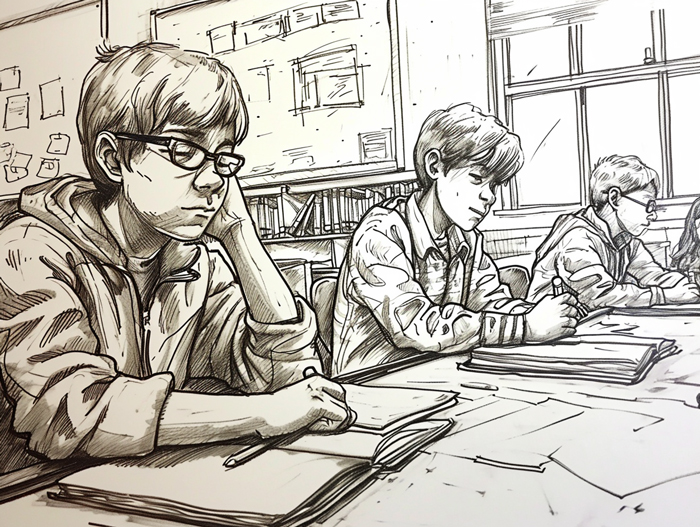Hey there! Are you tired of hearing about the importance of hands-on experience without actually knowing what it looks like in practice? Well, you’re in luck! In this article, I’ll be sharing some exciting examples of hands-on experience that will leave you inspired and ready to dive right in. Whether you’re a student looking to enhance your learning or a professional seeking to level up your skills, these real-life scenarios will show you the power of getting your hands dirty and learning by doing. So, get ready to be amazed by the incredible possibilities that hands-on experience can offer!
Have you ever wondered what it would be like to learn a new skill by actually doing it? Well, wonder no more! In this article, I’ll be taking you on a journey through a variety of hands-on experiences that will ignite your curiosity and spark your desire to learn. From building robots to crafting culinary masterpieces, we’ll explore the endless opportunities that hands-on experience provides for growth and development. So, if you’re ready to roll up your sleeves and get your hands dirty, join me as we dive into the world of hands-on learning!
What is Hands on Experience?
When it comes to learning, hands-on experience is a vital component. It goes beyond textbooks and lectures, giving us the opportunity to immerse ourselves in practical, real-world situations. Hands-on experience allows us to actively engage with the subject matter, apply theoretical knowledge, and gain a deeper understanding of the concepts at hand.
Hands-on experience can take many forms. It could be conducting experiments in a science lab, building structures with blocks, or even exploring nature to learn about different plants and animals. Whether we’re learning how to solve a mathematical equation or create a work of art, hands-on experience allows us to put theory into practice and see the results firsthand.

One of the key benefits of hands-on experience is that it fosters active learning. Instead of passively absorbing information, we actively participate in the learning process. This active involvement enhances our problem-solving skills, critical thinking abilities, and creativity. It helps us develop a deeper grasp of the subject matter and builds confidence in our abilities.
Moreover, hands-on experience promotes a holistic understanding of the topic. By actually engaging in the activities related to the subject matter, we gain a multi-dimensional perspective that goes beyond words on a page. We can see, touch, and feel the concepts in action, which not only improves our comprehension but also makes the learning experience more enjoyable and memorable.
In today’s fast-paced world, hands-on experience is more important than ever. It equips us with the practical skills and knowledge needed to navigate the challenges of the real world. Whether it’s a student preparing for a career or a professional looking to upskill, hands-on experience provides a solid foundation for success.
Definition List For Examples of hands on experience

When it comes to hands-on experience, there are countless ways to engage and learn. Here are a few examples that highlight the diverse range of activities that can provide a valuable hands-on learning experience:
- Science Experiments: Conducting science experiments allows students to explore scientific concepts firsthand. Whether it’s mixing chemicals, observing reactions, or measuring and recording data, hands-on experimentation not only reinforces theoretical knowledge but also develops critical thinking and analytical skills.
- Building and Construction: Engaging in building and construction activities, such as assembling models or constructing structures with blocks or Legos, helps children understand principles of engineering, problem-solving, and spatial awareness. Through hands-on building, they learn to visualize, plan, and execute their ideas.
- Nature Exploration: Taking children outdoors to explore nature is a great way to instill a sense of wonder and curiosity. By observing plants and animals in their natural habitat, children develop an appreciation for the environment while learning about ecosystems, biodiversity, and the interconnections of the natural world.
- Arts and Crafts: Engaging in arts and crafts activities, such as painting, sculpting, or creating collages, allows children to express their creativity and develop fine motor skills. Through hands-on artistic endeavors, they learn to experiment with different materials, colors, and textures, fostering self-expression and imagination.
- Field Trips and Museum Visits: Taking students on field trips or museum visits provides a real-world context for learning. Whether it’s visiting a historical site, a science museum, or an art gallery, these hands-on experiences allow students to connect what they learn in the classroom with the larger world around them, deepening their understanding and appreciation for various subjects.
Hands-on experience is a powerful educational tool that goes beyond textbooks and lectures. It engages learners actively, allowing them to apply theoretical knowledge, develop critical thinking skills, and gain a deeper understanding of the subject matter. By providing diverse examples of hands-on experiences, we can empower educators and parents to promote active learning and create immersive learning opportunities for children.
Why Hands-On Experience is Important
Why Hands-On Experience is Important
As an experienced educator, I firmly believe in the power of hands-on experience in the learning process. Hands-on experience engages learners actively, allowing them to apply theoretical knowledge, develop critical thinking skills, and gain a deeper understanding of the subject matter. In this section, I will delve into why hands-on experience is crucial for effective learning.
Enhances Active Learning
Hands-on experience promotes active learning by involving students in activities that require active participation and manipulation of objects. Rather than passively listening or reading, students are encouraged to explore, experiment, and solve problems on their own. This promotes a deeper level of engagement and increased retention of information.
Promotes Application of Knowledge
Through hands-on experience, students have the opportunity to apply the concepts and theories they have learned in a practical setting. This bridges the gap between theory and practice and allows them to see how the knowledge they have acquired can be used in real-life situations. By actively applying their knowledge, students gain a deeper understanding of the subject matter and can see its relevance in the world around them.
Develops Critical Thinking Skills
Hands-on experience encourages students to think critically and problem-solve. When faced with challenges or obstacles during hands-on activities, students are required to think analytically, consider different solutions, and make informed decisions. This fosters the development of critical thinking skills that are essential for success in both academic and real-world contexts.
Engages Multiple Senses
Hands-on experience involves the use of multiple senses, including touch, sight, hearing, and sometimes even taste and smell. By engaging multiple senses, students are able to fully immerse themselves in the learning process and strengthen their connections to the material. This multisensory approach not only enhances learning but also makes it more enjoyable and memorable.
Encourages Collaboration and Communication
Hands-on activities often require students to work in groups or pairs, fostering collaboration and communication skills. Students learn to share ideas, discuss strategies, and work together toward a common goal. These interpersonal skills are invaluable in the professional world, where teamwork and effective communication are highly valued.
Benefits of Hands-On Experience
Benefits of Hands-On Experience
Enhanced Learning
When it comes to learning, hands-on experience provides numerous benefits that go beyond traditional methods. By actively engaging in hands-on activities, students have the opportunity to enhance their learning experience. Here’s why:
- Active engagement: Hands-on activities actively involve students in the learning process. This active engagement allows them to retain information better and stay more focused on the subject matter.
- Multi-sensory experience: Hands-on activities engage multiple senses, such as touch, sight, and sometimes even smell and taste. This multi-sensory approach helps to reinforce learning and improve memory retention.
- Deep understanding: Through hands-on experience, students are able to apply theoretical knowledge in real-world contexts. This practical application of concepts enables them to develop a deeper understanding of the subject matter.
Practical Application of Knowledge
One of the key advantages of hands-on experience is the ability to apply knowledge to real-world situations. Here’s how hands-on activities foster practical application of knowledge:
- Problem-solving skills: Hands-on activities often require students to think critically and problem solve. By encountering and resolving challenges during these activities, students develop their problem-solving skills and learn how to apply their knowledge in practical ways.
- Transferable skills: Hands-on experience also helps students develop transferable skills that can be applied across different subjects and contexts. These skills include creativity, adaptability, teamwork, and communication.
- Future readiness: Hands-on experience prepares students for future challenges by giving them the opportunity to learn and practice skills that are highly valued in the workplace, such as experimentation, innovation, and collaboration.
Improved Problem-Solving Skills
Hands-on experience is a powerful tool for enhancing problem-solving skills. Through hands-on activities, students are presented with real-world challenges that require critical thinking and problem-solving abilities. Here’s why hands-on experience improves problem-solving skills:
- Active learning: Hands-on activities engage students actively in the learning process, promoting a deeper understanding of concepts and fostering analytical thinking skills.
- Trial and error: Hands-on activities often involve an element of trial and error, allowing students to learn from their mistakes and develop resilience. This process encourages them to think creatively and find alternative solutions.
- Real-world context: Hands-on activities provide students with a practical and real-world context in which to apply their problem-solving skills. This bridges the gap between theory and practice, making problem-solving more meaningful and relevant.
By engaging in hands-on experiences, students can enhance their learning, apply their knowledge in practical ways, and develop valuable problem-solving skills. These benefits not only enrich their educational journey but also prepare them for success in the future.
Examples of Hands-On Experience
Examples of Hands-On Experience
Internships and Co-ops
In my years of experience, I have seen the immense benefits of internships and co-ops when it comes to hands-on learning. These opportunities allow students to work in a professional setting and apply what they have learned in the classroom to real-world situations. For example:
- In an engineering internship, I collaborated with a team to design and build a working model of a solar-powered car. This hands-on experience not only deepened my understanding of engineering principles but also sharpened my problem-solving skills as we encountered unforeseen challenges along the way.
- During a co-op in a hospital, I had the chance to shadow nurses and assist with patient care. This hands-on experience gave me a firsthand understanding of the importance of empathy, communication, and critical thinking in a healthcare setting.
Volunteering and Community Service
Volunteering and community service opportunities are another excellent way for students to gain hands-on experience and make a positive impact on society. Here are a few examples:
- As a volunteer in a local animal shelter, I learned how to care for animals, handle them safely, and provide them with a loving environment. This hands-on experience not only taught me about animal behavior and welfare but also instilled a sense of compassion and responsibility.
- Through community service projects, I had the opportunity to organize food drives and distribute meals to those in need. This hands-on experience allowed me to see firsthand the impact of my actions and understand the importance of giving back to the community.
Lab Work and Research Projects
Engaging in lab work and research projects can provide students with valuable hands-on experience in scientific inquiry and critical thinking. Consider these examples:
- During a biology lab, I conducted experiments to study the effects of different environmental factors on plant growth. This hands-on experience allowed me to apply scientific methods, collect data, and analyze results, deepening my understanding of the subject and honing my research skills.
- In a research project, I worked with a team to investigate renewable energy sources. This hands-on experience involved data collection, analysis, and presentation, giving me a thorough understanding of the research process and the importance of sustainable energy solutions.
By actively participating in internships and co-ops, volunteering and community service, and engaging in lab work and research projects, students can gain practical, hands-on experience that not only enhances their learning but also prepares them for future success. Hands-on experience allows for active engagement, practical application, and the development of valuable skills that can be transferred to various domains. Whether it’s working on a solar-powered car, caring for animals, or conducting scientific research, hands-on experiences provide invaluable learning opportunities.
How to Gain Hands-On Experience
How to Gain Hands-On Experience
As an experienced professional, I’m often asked about the best ways to gain hands-on experience in various fields. In this section, I’ll share my insights and recommendations to help you make the most of your learning journey. Let’s dive in!
Pursue Relevant Internships
Internships are an excellent way to gain hands-on experience in your chosen field. Here are a few key tips to maximize the benefits of an internship:
- Research: Look for internships that align with your interests and career goals. Conduct thorough research to find reputable organizations that offer hands-on opportunities in your area of interest.
- Apply Early: Many internships have limited spots, so it’s crucial to apply early. Keep an eye on application deadlines and allow yourself enough time to craft a strong application.
- Network: Reach out to professionals in your desired industry and ask for recommendations or referrals to internships. Networking can open doors and help you find opportunities that may not be advertised publicly.
Get Involved in Community Projects
Volunteering and community service are fantastic ways to gain hands-on experience while giving back to society. Here’s how you can make the most of community projects:
- Research Local Opportunities: Look for local organizations or initiatives that align with your interests. Whether it’s environmental conservation, children’s education, or animal welfare, there are countless ways to get involved.
- Reach Out: Contact the organization or project coordinator to express your interest in volunteering. They will guide you through the process and provide information on any requirements or training involved.
- Be Proactive: Once you’re involved in a community project, be proactive and take initiative. Offer your assistance, ask questions, and actively participate. This will not only enhance your learning experience but also make a positive impact on the community.
Seek Out Lab Opportunities and Research Positions
For those interested in science, technology, or academia, lab work and research positions offer invaluable hands-on experience. Here’s how you can get started:
- Connect with Professors and Researchers: Reach out to professors, researchers, or department heads at your educational institution. Express your interest in lab work or research and inquire about any available positions or ongoing projects.
- Participate in Research Programs: Many universities and research institutes offer research programs for students. Look for these opportunities and apply to gain hands-on experience in your desired field.
- Attend Conferences and Workshops: Participating in conferences and workshops relevant to your field can open doors to research opportunities. Engage with professionals, present your work, and build connections that can lead to hands-on experiences.
Remember, hands-on experience is not only a valuable learning tool but also a stepping stone to future success. So seize every opportunity, immerse yourself in practical learning, and watch your skills grow. Now, let’s move on to the next section and explore the importance of reflection in the learning process.
Conclusion
Hands-on experience is undeniably invaluable in the learning process. Throughout this article, I have discussed various examples of hands-on experiences, including internships, volunteering, and lab work. These experiences not only provide practical knowledge but also enhance skills such as problem-solving, critical thinking, and teamwork.
By pursuing relevant internships, getting involved in community projects, and seeking out lab opportunities and research positions, individuals can gain the hands-on experience they need to excel in their chosen fields. These experiences serve as stepping stones to future success by allowing individuals to apply theoretical knowledge in real-world settings.
Hands-on experience offers a unique and effective way of learning. It allows individuals to bridge the gap between theory and practice, develop essential skills, and gain a deeper understanding of their chosen fields. So, whether you are a student, a professional, or someone looking to switch careers, don’t underestimate the power of hands-on experience in shaping your future success. Embrace opportunities for hands-on learning and watch yourself grow both personally and professionally.

